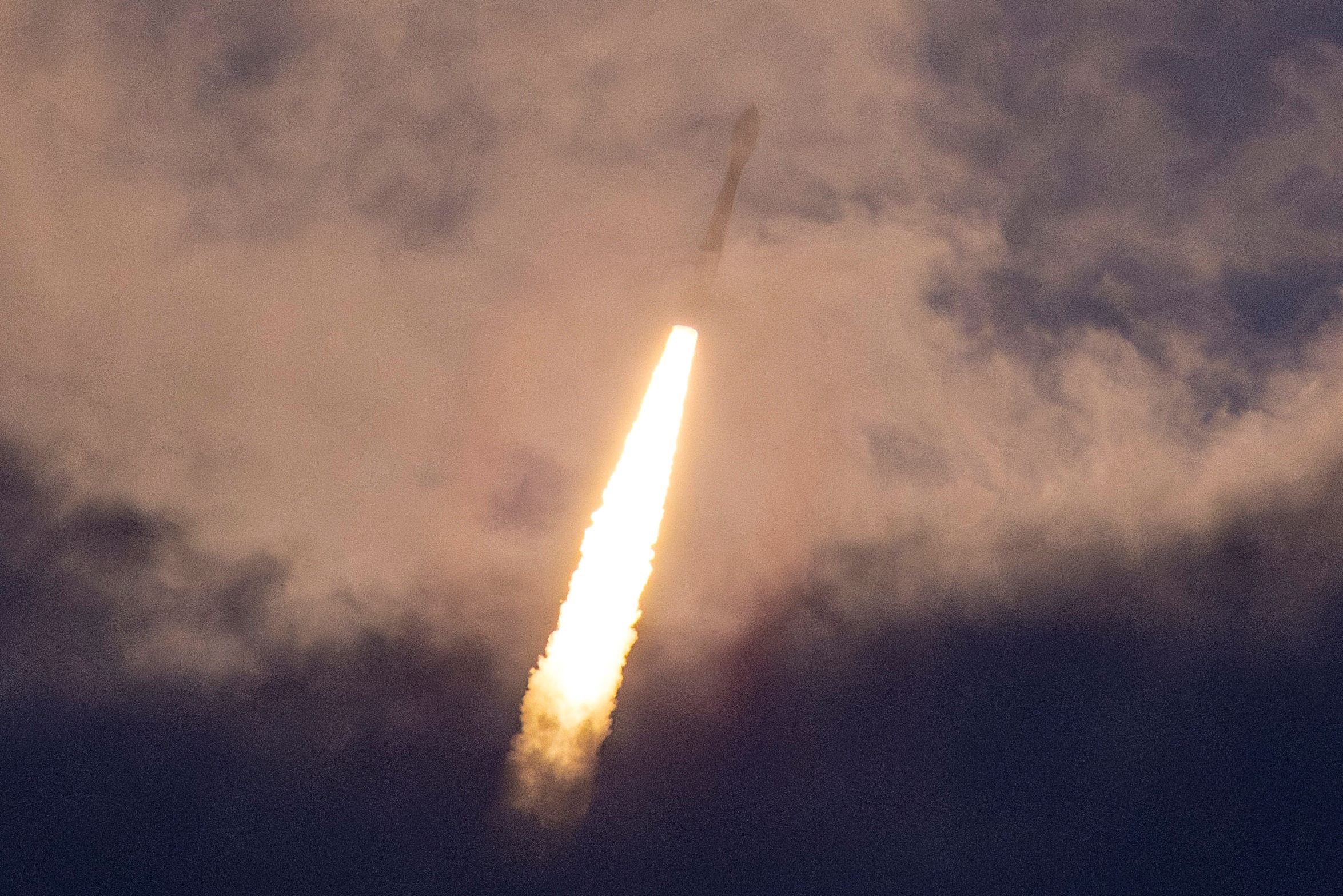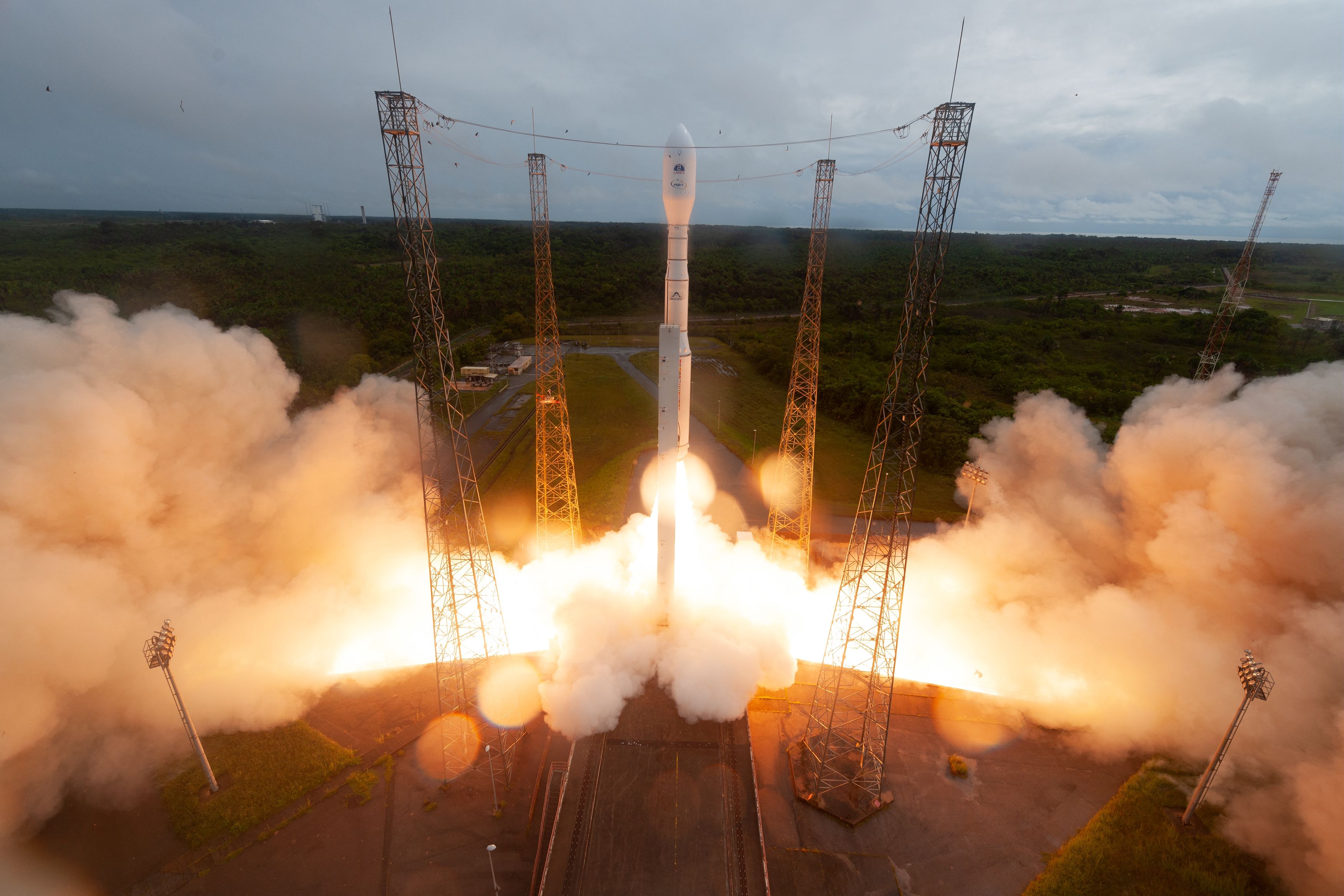
Europe's Arianespace launched the Vega-C rocket on Thursday, marking a return to space for the upgraded Italian launcher two years after it failed during a debut commercial mission.
Carrying the Sentinel-1C satellite into orbit for the European Union's flagship Copernicus Earth observation program, Vega-C blasted off into leaden skies from its Kourou launch pad in French Guiana at 6:20 pm (2120 GMT), live images showed.
"Parameters on board are normal," range operations manager Jean-Frederic Alasa said at the Guiana Space Centre control room before placing the satellite into "barbecue mode", rotating it to control the heat effect from the sun's rays about halfway to its 700-km orbit.
READ MORE: Europe agency says in talks with SpaceX on tackling space junk
The launch of the small-to-medium-sized uncrewed rocket is the latest step in securing Europe's access to space after the Ariane 6 heavy launcher staged an inaugural test flight in July. Ariane 6's own commercial debut has been delayed to 2025.
"An important day for Italy and for Europe. Vega C is back!" said Teodoro Valente, president of Italian Space Agency ASI, which is the main contributor to the Vega program.
Europe has faced a series of setbacks amid intense competition from Elon Musk's private US SpaceX launch company.
ALSO READ: Europe urged not to repeat tech underdog role before space talks
In December 2022, Vega rockets were grounded after the latest model failed two-and-a-half minutes into its second mission - and the first commercial flight - due to an anomaly with a motor, destroying two Earth-imaging satellites.
Earth observation
Built by Italy's Avio for the European Space Agency (ESA), Vega-C is due to play a key role after the conflict in Ukraine forced the bloc to stop using Russian Soyuz vehicles.

Previously, Europe relied on earlier Vega versions for small payloads, Soyuz for medium ones, and Ariane - built by Airbus-Safran venture ArianeGroup - for heavy loads.
READ MORE: Europe 'back in space' despite Ariane 6 debut glitch
Valente said Thursday's launch of Vega-C was a "step forward in Europe recovering its autonomy in accessing space".
Arianespace operates all major European launches but that will change from 2025 when Avio will take over the marketing of Vega-C following a decision by Italy to take greater control.
The Sentinel-1C satellite - developed and manufactured by Franco-Italian Thales Alenia Space (TAS), a joint venture between Thales and Leonardo - was successfully dropped off at 8:04 pm (2304 GMT).
"With Sentinel-1C into orbit, ESA continues a legacy of steadfast Sentinels protecting the Earth ... what we send to space provides benefits to Earth," ESA Director General Josef Aschbacher said in a statement.
ALSO READ: Ariane 5 launches final mission as Europe faces space gap
The satellite is expected to expand radar imagery to monitor the Earth's environment in all weather conditions for several applications. It is the first satellite of the mission to be equipped to support maritime safety and traffic management, TAS said.
With 12 Sentinel satellite families, developers say Copernicus is the world's biggest Earth observation system and holds the largest store of radar data.
Reuters reported on Monday that Thales and Leonardo were looking at setting up a new joint European satellites company, together with Airbus, to try to compete with Musk's fast-growing Starlink constellation in low Earth orbit.


